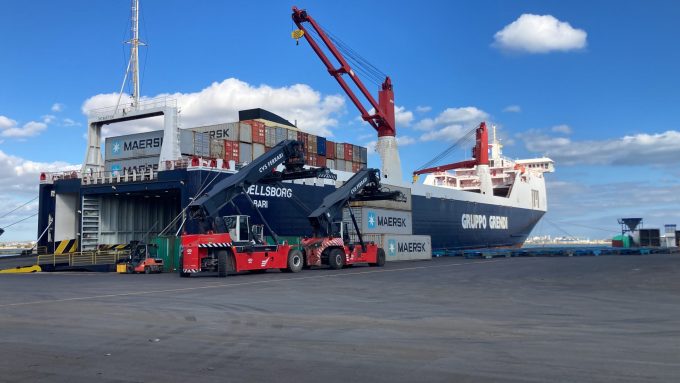Liners unveil Asia-Europe FAK price hikes to arrest steady rate decline
Container shipping lines are looking for a hike in Asia-Europe spot freight rates, announcing a ...

In an attempt to break into the fast-growing Tunisian export market, Maersk has taken the novel step of introducing a combined container/ro-ro service that also revives transhipment operations at the Sardinian port of Cagliari.
As nearshoring has found increasing favour among European importers, Tunisia’s garment manufacturers have begun to build up their market share as an alternative sourcing location to Asia, and today textile exports out of Tunisia are nearing the €4bn a year mark, with Europe accounting for over 80% of demand for its fashion products.
However, in an effort to avoid congestion at the Tunis-Rades Container Terminal, where container services from MSC, CMA CGM and various feeder operators call, Maersk has chartered the 2014-built ro-ro vessel Wedellsborg from Danish owner Weco RoRo to operate the Rades-Cagliari leg.
However, the ship will solely carry containers, rather than the trucks and unaccompanied trailers the vessel was originally designed for – which means it can call at Rades’ multipurpose terminal, La Goulette.
In combination, Maersk has also launched a weekly feeder service between Cagliari’s MITO terminal and its Moroccan deepsea transhipment hub at Tanger, deploying the 862 teu Visitor, run by X-Press Feeders.
“The combination of conventional feeder vessels and ro-ro is a strategic choice of Maersk, allowing several operational advantages for the optimisation of loading operations on the ship with increased speed, cutting waiting times which also significantly reduces fuel consumption, and therefore CO2 emissions,” a spokesman told The Loadstar.
This has involved some out-of-the-box thinking in terms of cargo operations at La Goulette, with containers hauled onto the vessels freight deck by tug-trailers and then positioned by a reach stacker (see below).
The service will also inject fresh life into Cagliari, where some 20 years ago P&O Ports built a large-scale transhipment hub to compete with Malta and Gioia Tauro, but which became gradually idle as carrier calls concentrated at other ports.
In 2021, Grendi Group-backed Mediterranean Intermodal Terminal Operator (MITO) relaunched container operations at the port, possibly banking on an increase of traffic from the nearshoring effect.
“The international container terminal in Cagliari, thanks to its central position in the Mediterranean, is the ideal platform for the efficient and fast distribution of goods in an area that covers some of the main markets in the Southern Med region within a radius of just 400 nautical miles,” said MITO when it announced it was talking to Maersk in late November.
Meanwhile, Ruben Moratinos, Maghreb head of sales at Maersk, said the ro-ro link between Rades and Cagliari would be triangulated in January to also include an Algerian call.
“Our new offering is reducing the transit times to and from Tunisia significantly while also adding reliability and efficiency to the supply chains of our customers in this important market,” he said. This new solution will also allow us to connect the eastern part of Algeria from January with the reopening of the port of Annaba, which will boost intra-Mediterranean trade.”
Maersk has also followed its integrator strategy in Tunisia, with a series of landside value-add investments, including the availability of a bonded warehouse, airfreight, less-than-container load cargo and supply chain and 4PL solutions.
Comment on this article